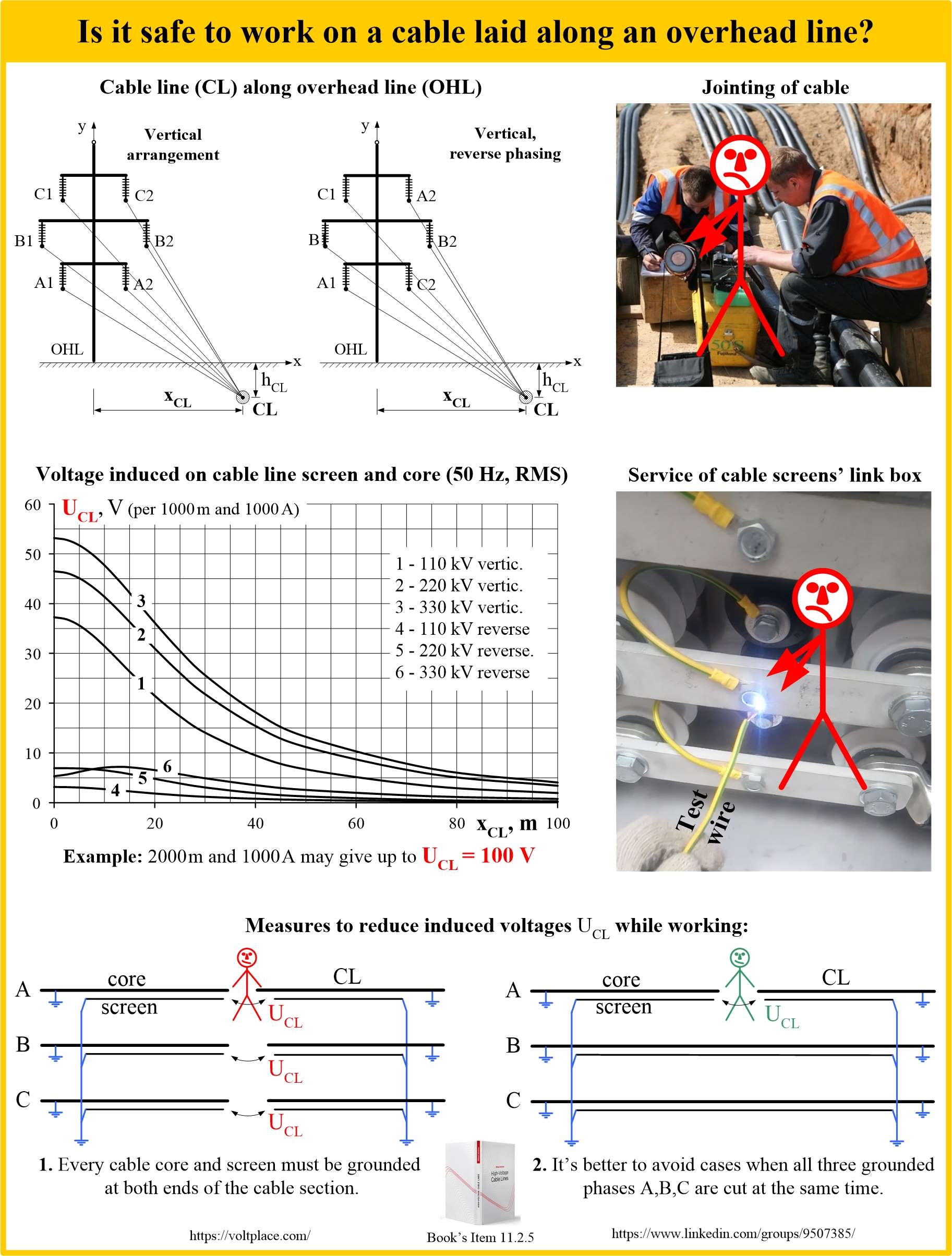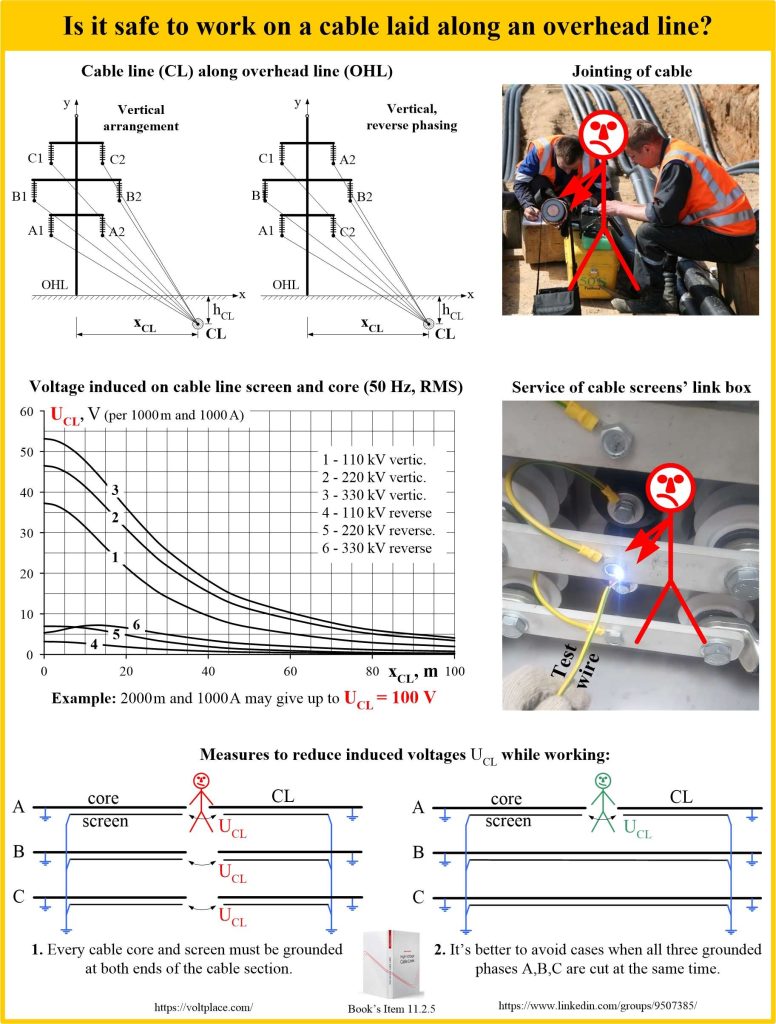
Voltage induced on cable line
Sometimes we have to lay our cable line (CL) along some other 6-750 kV existing lines (cable or overhead). In such cases, we have to think about the magnitude of the induced voltages on the core and screens of our CL. Such interference is caused by the magnetic field of currents passing in adjacent cable or overhead lines (OHL).
Today let’s offer an example of voltage calculation, showing what kind of leads can occur on our CL if a double-circuit OHL passes along, at a distance of Xcl.
It turns out that the leads on the cores and screens of our CL can reach 50 Volts per 1000 m length and a current of 1000 A. The length here is not the full length of the cable or overhead line, but only the length of the section where our CL and the neighboring OHL follow along each other. The current is the current in each phase wire of the OHL.

For example, with a section length of 2000 m and currents of 1000 A, the induced voltage on the cores and screens of our CL can reach 100 V (50 Hz, effective value). Such voltage is certainly dangerous for cable personnel. In the case when short-circuit currents pass through the OHL phase wires, the leads to the CL become many times greater.
What can be offered to protect the personnel who perform the CL pulling, installation, maintenance? At a minimum, we can suggest the following:
1️⃣ Before performing any work, it is recommended to ground each CL’s core and each CL’s screen on both sides. Unfortunately, this will not protect personnel during the installation of the cable termination or cable joint, since the two-side grounded cores/screens are cut with the appearance of a gap with induced voltage on it (figure bottom left).
2️⃣ Considering what is stated in Item 1, it is recommended to avoid situations where a gap exists in three phases at once. Where possible, it is advisable to carry out the work gradually. While the work is carried out in one phase, the other two remain closed and grounded on both sides (figure bottom right). It helps to significantly reduce induced voltages.
3️⃣ Other measures:
- ✅ Reverse phasing of overhead line wires, see diagram (usually it does not depend on our wishes, but is determined by the owner of the OHL when designing it).
- ✅ Transposition of our A,B,C cables (it better helps when our CL has induced voltages not from next OHL, but from operating circuit of our double-circuit CL).
- ✅ Do not work on the CL in cases where there are OHL’s high load currents or when there is an increased risk of OHL’s short circuit (wind, thunderstorm, etc.).
- ✅ Check for “touch voltage” on the cable before starting any work.
- ✅ Work with gloves (where possible).
- ✅ Work on dielectric mats (where possible).
- ✅ Any other measures.
Please read Item 11.2.5 of the book
